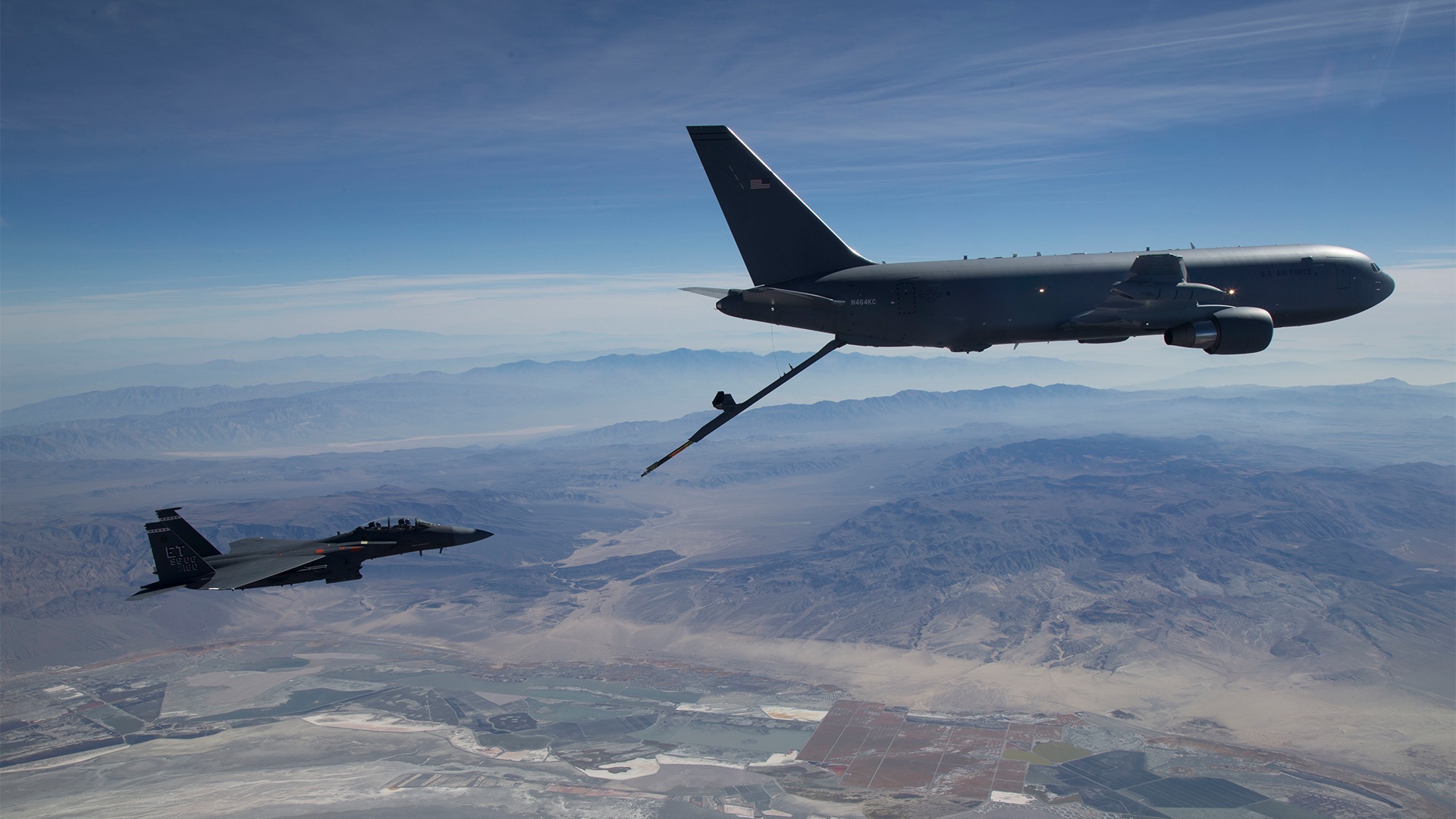

The skies over American cities will be filled with Air Force tanker aircraft on Tuesday to mark the 100th anniversary of the first in-flight aerial refueling in U.S. military history.
More than 150 aircraft — including KC-135 Stratotankers, KC-10 Extenders, and the KC-46 Pegasus — from 26 installations will conduct the commemorative flyovers in all 50 states, according to the Air Force.
“Air refueling propels our nation’s airpower across the skies, unleashing its full potential,” Air Mobility Command boss Gen. Mike Minihan said in a statement. “It connects our strategic vision with operational reality, ensuring we can reach any corner of the globe with unwavering speed and precision. Air refueling embodies our resolve to defend freedom and project power, leaving an indelible mark on aviation history.”
The flyovers will happen periodically throughout the day over major cities and state capitals.
One hundred years ago, on June 27, 1923, two aircraft from what was then the Army Air Service took off from Rockwell Field in San Diego, California. Flying in a DH-4B, 1st Lt. Virgil Hine and 1st Lt. Frank W. Seifert passed a gravity hose to a second DH-4B piloted by Capt. Lowell H. Smith and 1st Lt. John P. Richter and began successfully pumping gasoline.
Subscribe to Task & Purpose Today. Get the latest military news and culture in your inbox daily.
Two months later, Smith and Richter would use this newly demonstrated aerial refueling technique to make another record-breaking flight. Starting on August 27, they flew for a little more than 37 hours, completing 16 aerial refuelings and setting 16 new world records for distance, speed, and duration, according to the National Museum of the United States Air Force.
The two pilots would make another endurance flight in October, flying continuously from the Canadian to the Mexican border while completing three aerial refuelings along the way.
The Army Air Corps would continue to experiment with the technique for several decades, although the process first pioneered by Smith and Richter was never used operationally. In 1948, the newly designated Air Force acquired its first 40 KB-29M tankers, which still used a basic hose system for aerial refueling. Two years later, Boeing developed the first “flying boom” refueling system, which was better suited for use at night, in bad weather, and with high-speed aircraft. By 1953, the Air Force’s Strategic Air Command was operating nearly 30 aerial refueling squadrons.
“One hundred years later, the United States Air Force celebrates these Airmen and looks to the next generation to bring diversity of thought, push boundaries and find solutions beyond the status quo,” wrote the Air Force’s Air Mobility Command in a statement.
The latest on Task & Purpose
- The Navy is offering up to $75,000 in enlistment bonuses to get more sailors
- No, military helicopters are not invading California
- No ‘golden hour’? How Army medicine is changing for the next war
- Army fires former 5th SFAB commander following investigation
- Russia’s antique tanks are finding a second life as VBIEDs
